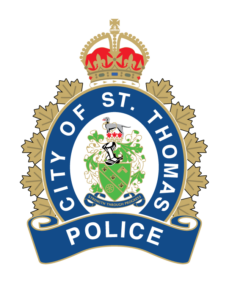
911
FREQUENTLY ASKED QUESTIONS
The three-digit telephone number “9-1-1” has been designated as the “Universal Emergency Number” for citizens throughout North America to request emergency assistance. It is intended as a nationwide telephone number and gives the public fast and easy access to a Public Safety Answering Point (PSAP).
An emergency is any situation where there are people or property at risk. Examples include fires, crimes in progress or medical emergencies. Your call is answered by a trained emergency call taker who will provide you with the assistance you require. You can also dial 9-1-1 from your cellular phone. The call is toll free.
- At home, you can dial 9-1-1 direct.
- At a business or other location, you may need to dial an outside line (i.e. dial 9 first) before dialing 9-1-1.
- At a pay phone, dial 9-1-1. This is a free call.
- When using a cellular phone be prepared to give the exact location of the emergency as 9-1-1 Operators do NOT know where you are. This is also a free call.
- For TTY access (Teletypewriter Device for the Deaf) press the spacebar announcer key repeatedly until a response is received, do not hang up.
- Wireline 9-1-1 calls in the City of St. Thomas are accompanied by electronic data when they reach our call takers. This electronic data includes your telephone number and civic address. This means that if the connection is lost or the caller cannot speak, help can still be dispatched.
- In the case of cellular calls, electronic data with location information is not automatically available to the call taker. It is up to the caller to describe the exact location of the emergency.
- If you have a choice between using a wireline phone or a cell phone to call 9-1-1, the wireline should always be your first choice. The connection is more secure and the location data is available automatically.
If you or someone you know has decided to give up their wired phone at home in favour of cellular only, we recommend the following precautions.:
- Always be aware of where you have placed your handset. You want it to be easily found (by yourself and/or visitors) at a moment?s notice, at all hours of the day.
- Always ensure your handset has a fully charged battery. You may feel safer leaving it powered on at all times, ready to dial at a moment?s notice.
- Understand that even though you are in your home, your home address is not displayed to the 9-1-1 calltaker. Be prepared to provide this information verbally.
- Ensure your carrier has current/accurate subscriber information on file.
- Understand that some of the common problems with cellular calls do not go away just because you have dialed the digits 9-1-1. Voice transmissions can become distorted and/or interrupted just like any phone call you may place from your cell phone.
Each day our 9-1-1 emergency calltakers deal with a high percentage of false cellular 9-1-1 calls. On sets pre-programmed to dial 9-1-1, keys are often accidentally pressed, setting off unintentional 9-1-1 calls. Consumers unknowingly tie up 9-1-1 telephone lines, unnecessarily tying up the resources of emergency responders and causing a negative impact for true emergent calls for help.
- Remain calm and speak clearly.
- Identify which emergency service you require (Police, Fire, or Ambulance) and be prepared to provide the following: what is happening what is the location what is your name, address, and telephone number.
- Please remain on the line to provide additional information if requested to do so by the call taker. DO NOT HANG UP UNTIL THE CALL TAKER ADVISES YOU TO DO SO.
- Remember, it is important to have your house numbers visible from the street. This will assist emergency responders in locating you as quickly as possible.
Do your children know how to get help in an emergency? Teach your children how and when to get help from 9-1-1 teach your children their address and telephone number as soon as they are able to learn keep it posted by all phones in case they are unsure tell your children to answer all of the emergency call takers’ questions and stay on the phone until they are told to hang up teach your children about the dangers of making prank 9-1-1 calls.
Prank 9-1-1 calls waste time and money and can also be dangerous. If 9-1-1 lines or responders are busy with prank calls, someone with a real emergency might not get the help that they need.
It is not an emergency when the situation is not dangerous and immediate action is not necessary. Do not call 9-1-1:
- For information about school closings, road conditions, directions, etc.
- For directory assistance.
- For information about paying parking tickets.
- When you’re bored and just want to talk.
If your complaint is not an emergency dial 519-631-1224, the non-emergency number for the St. Thomas Police Service. The non-emergency number calls are answered by an “auto attendant”. The “auto attendant” allows touch tone phone users to self direct their call. Callers with a rotary phone and those callers that choose the “Zero Out” option are answered by a switchboard operator to connect your call.